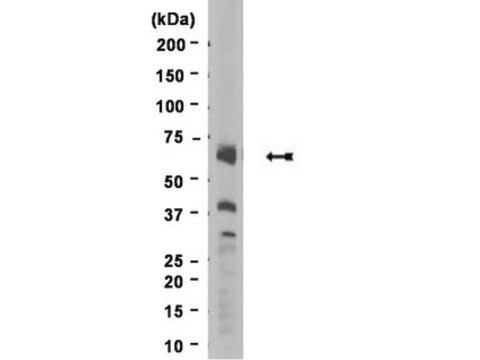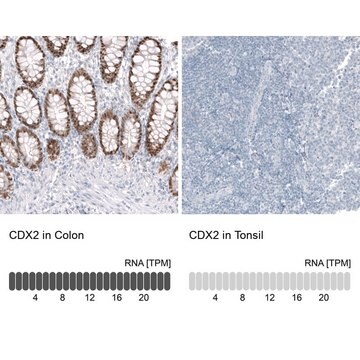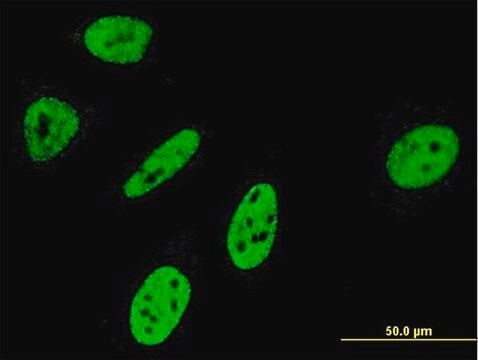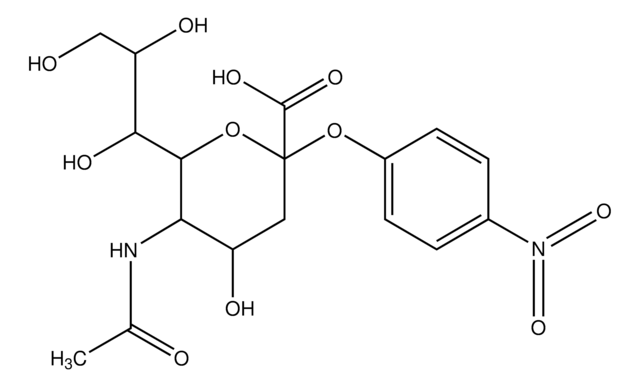04-046
Anti-SUZ12 Antibody, clone 3C1.2
clone 3C1.2, Upstate®, from mouse
Sign Into View Organizational & Contract Pricing
All Photos(1)
About This Item
UNSPSC Code:
12352203
eCl@ss:
32160702
NACRES:
NA.41
Recommended Products
biological source
mouse
Quality Level
antibody form
purified immunoglobulin
antibody product type
primary antibodies
clone
3C1.2, monoclonal
species reactivity
human
manufacturer/tradename
Upstate®
technique(s)
western blot: suitable
isotype
IgG1κ
NCBI accession no.
UniProt accession no.
shipped in
dry ice
target post-translational modification
unmodified
Gene Information
human ... SUZ12(23512)
General description
SUZ12 is a polycomb group (PcG) protein. PcG proteins act by forming multiprotein complexes, which are required to maintain the transcriptionally repressive state of homeotic genes throughout development. PcG proteins are not required to initiate repression, but to maintain it during later stages of development. They probably act via the methylation of histones, rendering chromatin heritably changed in its expressibility. Component of the PRC2 complex, which methylates ′Lys-9′ and ′Lys-27′ residues of histone H3.
Specificity
SUZ12
Immunogen
Full length, recombinant human SUZ12.
Application
Anti-SUZ12 Antibody, clone 3C1.2 is a high quality Mouse Monoclonal Antibody for the detection of SUZ12 & has been validated in WB.
Research Category
Epigenetics & Nuclear Function
Epigenetics & Nuclear Function
Research Sub Category
Chromatin Biology
Chromatin Biology
Quality
Routinely evaluated by immunoblot.
Target description
95 kDa
Physical form
100 μg of Protein A purified mouse monoclonal IgG1κ in 100 μL of 1X PBS, pH 7, 0.1% Azide.
Format: Purified
Protein A purified
Storage and Stability
2 years at -20°C from date of shipment.
Analysis Note
Control
HeLa cell lysate
HeLa cell lysate
Legal Information
UPSTATE is a registered trademark of Merck KGaA, Darmstadt, Germany
Disclaimer
Unless otherwise stated in our catalog or other company documentation accompanying the product(s), our products are intended for research use only and are not to be used for any other purpose, which includes but is not limited to, unauthorized commercial uses, in vitro diagnostic uses, ex vivo or in vivo therapeutic uses or any type of consumption or application to humans or animals.
Not finding the right product?
Try our Product Selector Tool.
recommended
Product No.
Description
Pricing
Storage Class Code
12 - Non Combustible Liquids
WGK
WGK 2
Flash Point(F)
Not applicable
Flash Point(C)
Not applicable
Certificates of Analysis (COA)
Search for Certificates of Analysis (COA) by entering the products Lot/Batch Number. Lot and Batch Numbers can be found on a product’s label following the words ‘Lot’ or ‘Batch’.
Already Own This Product?
Find documentation for the products that you have recently purchased in the Document Library.
Tong Ihn Lee et al.
Cell, 125(2), 301-313 (2006-04-25)
Polycomb group proteins are essential for early development in metazoans, but their contributions to human development are not well understood. We have mapped the Polycomb Repressive Complex 2 (PRC2) subunit SUZ12 across the entire nonrepeat portion of the genome in
H Kehrer-Sawatzki et al.
American journal of human genetics, 75(3), 410-423 (2004-07-17)
Detailed analyses of 20 patients with sporadic neurofibromatosis type 1 (NF1) microdeletions revealed an unexpected high frequency of somatic mosaicism (8/20 [40%]). This proportion of mosaic deletions is much higher than previously anticipated. Of these deletions, 16 were identified by
Marisa R Nucci et al.
The American journal of surgical pathology, 31(1), 65-70 (2007-01-02)
Nonrandom cytogenetic abnormalities of chromosomes 6, 7, and 17 have been reported within low-grade endometrial stromal sarcomas (LGESSs), and among these abnormalities, the t(7;17)(p15;q21) is the most common aberration described. Previously we had shown that this translocation joins 2 genes
Jae Hyun Lee et al.
Human molecular genetics, 18(14), 2567-2574 (2009-04-22)
We recently described two opposing states of transcriptional competency. One is termed 'competent' whereby a gene is capable of responding to trans-acting transcription factors of the cell, such that it is active if appropriate transcriptional activators are present, though it
A proteasome inhibitor-stimulated Nrf1 protein-dependent compensatory increase in proteasome subunit gene expression reduces polycomb group protein level.
Balasubramanian, S; Kanade, S; Han, B; Eckert, RL
The Journal of Biological Chemistry null
Our team of scientists has experience in all areas of research including Life Science, Material Science, Chemical Synthesis, Chromatography, Analytical and many others.
Contact Technical Service








